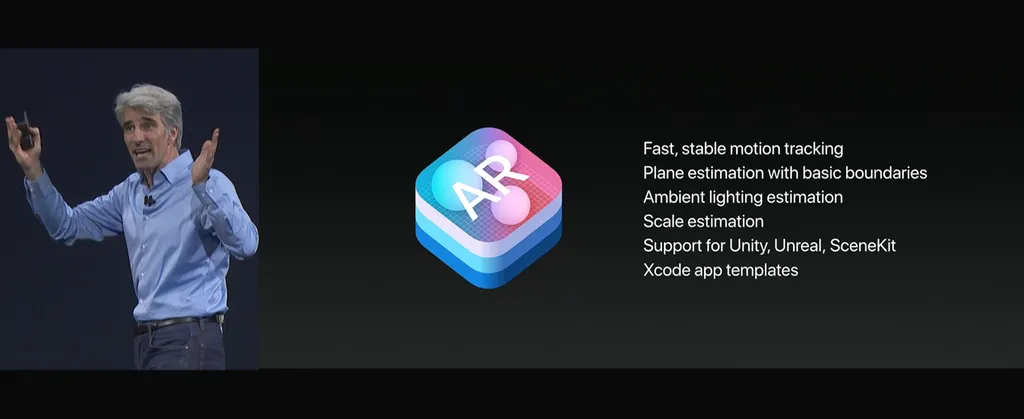One of the most enjoyable accounts on Twitter in recent days has been @MadewithARKit, which curates some of the best new pieces of content created in Apple’s new ARKit toolbox. The possibilities for VR developers that want to use the technology are literally endless, and if you use Unity, it is very easy to move VR objects into ARKit. It’s also quick — you can make an object in a program like Google Blocks and then put it in ARKit, where it can interact with the real world.
Developer and musician Andrew Deutsch used Blocks and ARKit to create a piano playing character who could then perform on any surface, including a bar top or an outdoor cafe table. He also made a piece where flowers popped up all over a dirty NYC subway platform. Deutsch is planning on spending more time experimenting with the medium, too. “It’s a brand new world of creation,” he says. “I’m following what a lot of people are making and the main thing is the they are having fun with it.”
Testing grass limits ( #ARKit / #unity ) pic.twitter.com/4Jaf8uJkeT
— ???cabbibo??? (@Cabbibo) July 25, 2017
VR artist Cabbibo, for instance, has shared a number of pieces, including one where flowers grow out of a sidewalk.
It also appears that he spent some of this time watching Netflix while creating swirling patterns around his living room.
Drawing new coral for datafish pic.twitter.com/bIXuaj1nnq
— ???cabbibo??? (@Cabbibo) July 23, 2017
But as much fun as it can be to create artsy projects, ARKit can also be the basis for many practical applications. At a recent ARKit meetup in New York, one company demoed a piece that allowed users to scan menus and visualize food items — great for people with visual or reading comprehension difficulties or non-native language speakers. There’s also a great use case for decorators or anyone who has struggled to buy a new sofa without knowing exactly how it will look in their living room. And of course, as use cases in the commercial space grow, brands will want to get in on the game, and companies like Vertebrae can help developers monetize their projects.
?️ Redecorating job? Watch how we roll in 2017 ? https://t.co/379OeOR8w4 by @AsherVo ? pic.twitter.com/ej4JO2jqP8
— Made With ARKit (@madewithARKit) July 21, 2017
As VR grows and changes as a medium, it is bound to start intersecting with AR in a number of ways. Nexus Interactive Arts, for instance, created basic inside-out positional tracking and pass-through AR for a Google Cardboard headset. Normal VR mirrored the actions of someone painting in the Vive with a character so users could see what was being created in real time.
For developers, the time to start exploring ARKit is now, when it’s still relatively underground. Once the mainstream finds out about the technology and what it can be used to create, the gold rush will be on.
Cortney Harding is a contributing columnist covering the intersection of VR and media. This column is an editorial product of TVREV, produced in partnership with Vertebrae, the native VR/AR ad platform.


























